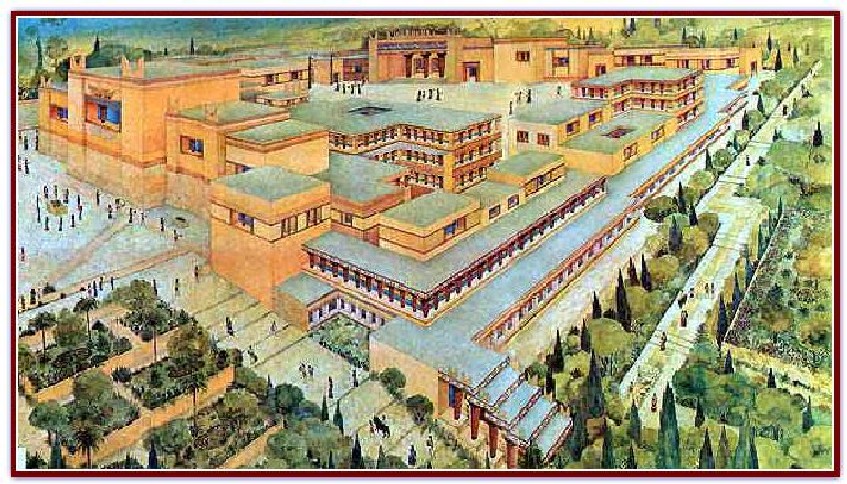

According to Classical Greek (4th/5th century BCE) writings, the Minotaur was a creature with the head of a bull and the body of a man who lived within a great maze under the palace. One of the most interesting and longest lasting legends from the Minoan civilization that has come down to the present day concerns a structure called the “Labyrinth” and the story of the “Minotaur” that lived within it. “Linear A” (as the older one came to be known), on the other hand, has yet to be deciphered, although most scientists agree by looking at its symbols that it is an obvious precursor to Linear B. Tablets and pottery shards from the collection at Knossos with this script have been deciphered, revealing business records, literary stories and even personal notes. Its link to the Greek writing system and alphabet of later centuries is now unquestioned. “Linear B” (as the younger one came to be known) was actually a precursor to Ancient Greek, and was probably the writing used by the Mycenaeans after 1400 BCE (similar writing has been found on the Greek mainland).

Excavations at the site by the British School of Archaeology, interrupted only during the world wars of the 20th century, continue to this day.Īmong the most significant discoveries at Knossos was the recovery of about 3000 shards and tablets containing writings in scripts unknown at the time. Controlling this vast trading network ultimately brought the Minoans a great deal of wealth, prestige and power in the region. Frescoes show a seafaring people engaged in trade throughout the Mediterranean from Egypt and the Arab world to Phoenicia and Anatolia (Turkey) to Greece, Sicily and the Italian peninsula, a fact not all that surprising considering Crete’s location. That’s why it’s now called Minoan.įrom the ruins, artifacts and frescoes unearthed at what became known as the “Palace of Knossos” by Evans and others between 19, archaeologists and historians were able to piece together at least an incomplete picture of the ancient Minoans. One of those archaeologists, Sir Arthur Evans of Great Britain, named the ancient civilization after the ancient Cretan king Minos. For centuries, knowledge of the ancient Cretans passed into myth and legend, but archaeologists and historians rediscovered the civilization in the early years of the 20th century. It lasted around 1500 years, and then suddenly declined in the 15th century BCE, when it was eventually absorbed into the expanding Mycenaean civilization originating from the Greek mainland. Sometime around 3000 BCE, an organized civilization arose on the north shore of the island. An island of obvious importance militarily and economically in the ancient Mediterranean world due largely to its strategic location, archeological remains show that Crete was inhabited by at least 6000 BCE, although there is some evidence for human settlement going back even further into history. Little is known for certain about any ancient civilizations on Crete. Crete was a second time stripped of its inhabitants, a remnant only being left who form, together with fresh settlers, the third Cretan people by whom the island has been inhabited. But on this account, when they came back from Troy, famine and pestilence fell upon them, and destroyed both the men and the cattle. Three generations after the death of Minos the Trojan War took place and the Cretans were not the least distinguished among the helpers of Menelaos. Minos, according to tradition, went to Sicania, or Sicily, as it is now called, in search of Daidolos, and there perished by a violent death.Men of various nations now flocked to Crete, which was stripped of its inhabitants but none came in such numbers as the Hellenes.


 0 kommentar(er)
0 kommentar(er)
